


OLIVER CROMWELL 1599 -
Acknowledgements
Cromwell: by the Dutch-
Including:
Sir Peter
Lely

xxxxxAs we have seen (1644 C1), Oliver Cromwell gained fame as a military leader in the Civil War, but following the execution of the king in 1649 he still had much to do. In 1650 he crushed a rebellion in Ireland and defeated the Scots at Dunbar, but the fighting was not over until he had routed the forces of the king’s son, “Charles II” at the Battle of Worcester in 1651. As leader of the Commonwealth he now had the task of setting up a workable republic. The Rump Parliament had little interest in reform of state or church, so in 1653 he went to the Commons and dissolved it by force. He then had to fall back on a military solution, dividing the country into eleven districts, each under a major-
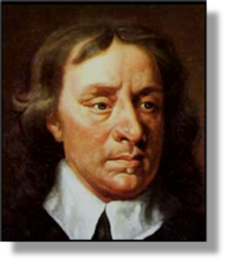 xxxxxAs we have seen (1644 C1), the member of parliament for Cambridge, Oliver Cromwell, came into prominence in the early part of the Civil War, gaining fame as an able organizer and a remarkable leader of men. The cavalry regiment he raised, later dubbed the "Ironsides", proved highly efficient and played a major part in Parliament's victory at the Battle of Marston Moor in 1644. The following year he assisted General Fairfax in the making of the New Model Army, and it was this highly disciplined force that routed the Royalists at the Battle of Naseby and brought about the king's surrender -
xxxxxAs we have seen (1644 C1), the member of parliament for Cambridge, Oliver Cromwell, came into prominence in the early part of the Civil War, gaining fame as an able organizer and a remarkable leader of men. The cavalry regiment he raised, later dubbed the "Ironsides", proved highly efficient and played a major part in Parliament's victory at the Battle of Marston Moor in 1644. The following year he assisted General Fairfax in the making of the New Model Army, and it was this highly disciplined force that routed the Royalists at the Battle of Naseby and brought about the king's surrender -
xxxxxThis might well have been the end of Cromwell's military career had the King, held captive by the army, not escaped to the Isle of Wight and secretly struck a deal with the Scots. In 1648 they sent an army under the Duke of Hamilton to support the royal cause, and Cromwell was chosen to meet and destroy it. His army did just that at the Battle of Preston. Here he positioned the New Model Army north of the Scottish force in order to prevent any escape across the border, and then defeated the Scots in a series of running battles. The king was now seen as a serious threat to peace and stability, and the Army, supported by Cromwell, engineered his trial on a charge of treason. He was found guilty in January 1649 and executed that same month.
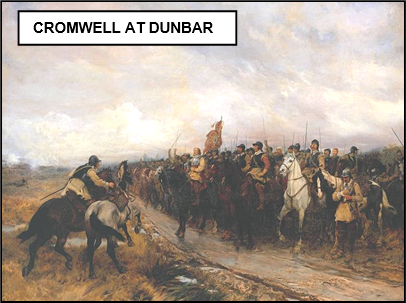 xxxxxBut, as we have seen, the execution of Charles I did not end the struggle between Crown and Parliament. His son now assumed the title of “Charles II” and received instant support from the Irish and the Scots. General Fairfax having resigned (he had opposed the king's execution), it fell to Cromwell to meet the new challenge. He arrived in Dublin in 1649 and, with the aid of his professional army, ruthlessly crushed the Irish rebellion, started, in fact, five years earlier. Thenxon returning to England in 1650, he advanced into Scotland and soundly defeated the Scots at the Battle of Dunbar (illustrated). According to Cromwell -
xxxxxBut, as we have seen, the execution of Charles I did not end the struggle between Crown and Parliament. His son now assumed the title of “Charles II” and received instant support from the Irish and the Scots. General Fairfax having resigned (he had opposed the king's execution), it fell to Cromwell to meet the new challenge. He arrived in Dublin in 1649 and, with the aid of his professional army, ruthlessly crushed the Irish rebellion, started, in fact, five years earlier. Thenxon returning to England in 1650, he advanced into Scotland and soundly defeated the Scots at the Battle of Dunbar (illustrated). According to Cromwell -
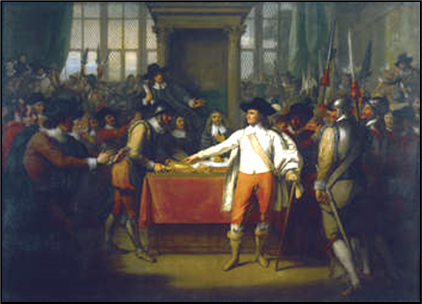 xxxxxHaving more than proved his prowess on the battlefield, Cromwell was now the natural leader of the "Commonwealth". As such he was faced with a most daunting task: to hammer out with the army and parliament a workable form of republican government. His first problem lay with the Rump Parliament, the remnant of the Long Parliament first called in 1640. Its members had little interest in the reform of church or state, and they were highly suspicious of the Army's intentions. Early in 1653 he decided to dissolve it by force. He went to the House with a contingent of musketeers and closed the assembly down. (Painting by the American artist Benjamin West.) It was on this occasion that he ordered the mace -
xxxxxHaving more than proved his prowess on the battlefield, Cromwell was now the natural leader of the "Commonwealth". As such he was faced with a most daunting task: to hammer out with the army and parliament a workable form of republican government. His first problem lay with the Rump Parliament, the remnant of the Long Parliament first called in 1640. Its members had little interest in the reform of church or state, and they were highly suspicious of the Army's intentions. Early in 1653 he decided to dissolve it by force. He went to the House with a contingent of musketeers and closed the assembly down. (Painting by the American artist Benjamin West.) It was on this occasion that he ordered the mace -
You have sat too long here for any good you have been doing. Depart
I say, and let us have done with you. In the name of God, go!
xxxxxGo they did, but their replacement, a nominated assembly of independents known as Barebone's Parliament, proved no less acceptable. So extreme were their views, that Cromwell was obliged to dismiss it in December 1653. He then fell back on a military solution, dividing the country into eleven districts, each governed by a Major-
xxxxxAlthough some useful legislation was passed over the next few years, neither of the parliaments which were summoned made any headway on constitutional reform. Indeed the parliament of 1657, clearly skeptical of change, went so far as to offer Cromwell the crown! This he refused, sure in the knowledge that such a move would lose him the support of the army. However, by the Humble Petition and Advice he did agree to the creation of a second house of Parliament, and his right to name his successor.
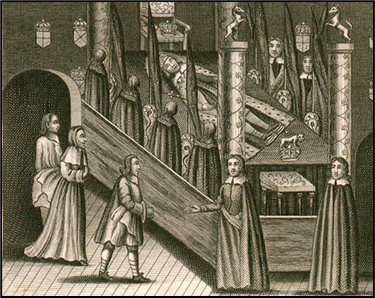
xxxxxBut by now, time to find a solution had run out. Cromwell -
xxxxxIt was an ignoble though -
xxxxxAt home, he managed to establish a stable government following the ravages of the civil war, despite growing uncertainty as to its future. But, given the intransigence of successive parliaments, and the presence of a powerful army closely involved in the political process, he was unable to carry through the reforms required to create a genuine republican state. This failure on his part was keenly felt, and he died a disappointed man. In foreign affairs, however, it was quite a different story. The success of the navy against the Dutch, and the possession of the formidable New Model Army, resulted in an alliance with the French against Spain, and this brought about the conquest of Jamaica in the West Indies and Dunkirk on the continent. Problems there might be at home, but in Europe the Commonwealth was recognized as a great power.
xxxxxAs we shall see, Cromwell was succeeded by his son Richard Cromwell in 1658, but he was clearly not up to the job. To stop the country sliding into total anarchy, the army intervened and, after a period of some confusion, the monarchy was restored in the person of Charles II.
xxxxxIncidentally, in 1659 the English poet and dramatist John Dryden wrote his heroic stanzas commemorating the death of Oliver Cromwell. However, a year later -
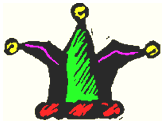 xxxxx...... Oliver Cromwell invented the term "foolscap" paper (a size used before the introduction of the A4 sheet). Before the execution of Charles I papermaking in England was licensed by the king so every sheet of paper had a watermark showing the royal monogram. Characteristically, Cromwell abolished the royal insignia and replaced it with a jester's cap -
xxxxx...... Oliver Cromwell invented the term "foolscap" paper (a size used before the introduction of the A4 sheet). Before the execution of Charles I papermaking in England was licensed by the king so every sheet of paper had a watermark showing the royal monogram. Characteristically, Cromwell abolished the royal insignia and replaced it with a jester's cap -
 xxxxx...... In October 2011 a leather jug -
xxxxx...... In October 2011 a leather jug -
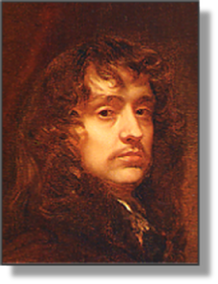 xxxxxThe portrait of Cromwell above was the work of the artist Sir Peter Lely (1618-
xxxxxThe portrait of Cromwell above was the work of the artist Sir Peter Lely (1618-
xxxxxLely was Dutch by birth, but settled in London in about 1641 and became a prominent court painter. His style was elegant and clearly showed the influence of the Flemish master Anthony van Dyck. Among his best known works are a series of court ladies known as the Windsor Beauties at Windsor Castle (four illustrated below), and The Admirals, a set of portraits in the National Maritime Museum at Greenwich, England (one illustrated below).
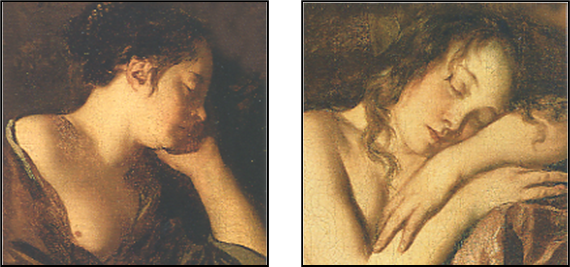
xxxxxThe above is a self portrait painted around 1660. On the right are two delightful details of one of his major works entitled Sleeping Nymphs by a Fountain. One of his largest and most erotic paintings, it was produced about 1650 and anticipates the Rococo style, typical of the work of the future French artist François Boucher.
xxxxxLely lived through the English Civil War and the Commonwealth period and, apart from his famous portrait of Cromwell, received a constant flow of work from his principal patron the Duke of Northumberland. It was he who commissioned one of Lely's most moving works, a meeting of Charles I and his son, James, Duke of York, at Hampton Court, just a year before the king's execution.
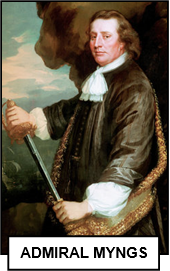
xxxxxBy 1660, the year of the restoration, he had become well established as the best artist in England, and he was painting all the leading figures of the period. Though for the most part in formal pose, many of his portraits are sensitively observed, and feminine beauty is often instilled with an air of "sensuous languor". The following year he was made the court's principal painter (as Van Dyke had been before him), and by then he had a flourishing studio with a large number of able assistants. Apart from portraiture, he made a series of magnificent drawings of the procession of the order of the garter -
xxxxxLely was a great art collector and over a long working life is reputed to have acquired at least 25 Van Dycks and eight works by the 16th century Venetian artist Paolo Veronese. However, at his death the collection was sold off to pay for his debts, which amounted to around £9,000. He is known to have lived in grand style. The diarist Samuel Pepys visited him and wrote afterwards: “He lives very genteely and treated us nobly at a dinner.” Also among his friends was the English poet Richard Lovelace, whose portrait he painted.
xxxxxThe four Windsor Beauties below are (left to right): Frances Teresa Stuart, Margaret Brooke, Jane Needham and Elizabeth Wriothsley.
xxxxxThe portrait artist Sir Peter Lely (1618-
CW-
xxxxxIn 1674 the talented Dutch artist Godfrey Kneller arrived in London, and Lely feared for his livelihood. He continued to make a good living, however, until he died suddenly in November 1680 while working in his studio -
xxxxxIncidentally, Lely was born at Soest, Westphalia, where his father, a captain in the Dutch infantry, was serving at the time. His original name was Pieter van der Faes, but it would seem that he took the name Lely from a lily carved in wood over the gable of the house where his father was born.



